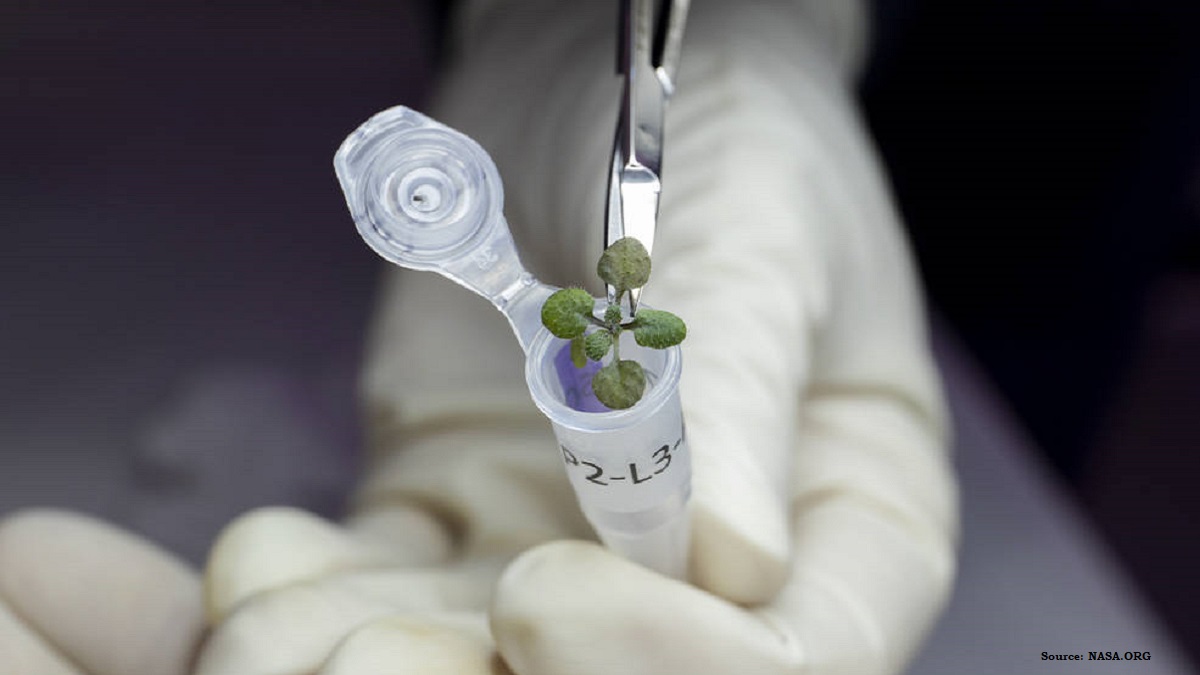[ad_1]

Scientists have grown plants in the soil collected from Moon, which is a historic first in human history and a major milestone in space exploration. The experiment was jointly undertaken by NASA and researchers from the University of Florida.
The researchers from the University of Florida showed in their research study how plants can successfully sprout and grow in the lunar soil collected during the Apollo Moon missions.
Their study also researched how plants respond biologically to the lunar soil, which is also known as lunar regolith. The results of the experiment have been published in the journal- Communications Biology.
🌱 Like plants? Good. Like plants grown in lunar soil? Scientists just did that. Ask @UF and @NASAMoon experts about their groundbreaking experiment, and what it means for future astronauts. https://t.co/0UGzCTvoo7
— NASA (@NASA)
May 12, 2022
Also Read: Yellow Brick Road-like Structure discovered at bottom of Pacific Ocean
The Plant Experiment- All You Need to Know
- The researchers used lunar soil samples collected by Apollo 11, 12, and 17 missions to grow Arabidopsis, a relative of mustard greens. A gram of lunar soil was used to grow each plant.
- The scientists added water and seeds to the soil samples and stored them in terrarium boxes in a clean room, said NASA in a statement on May 12.
- As the soil is poor in nutrients, a solution had to be added to it daily. Two days later, the seeds sprouted much to the surprise of the researchers.
Were the plants the same as the ones grown on Earth?
While the scientists were able to grow the plants, it was observed that the plants were not as strong as the ones grown on the Earth.
The scientists observed that the plants grew more slowly and had stunted roots and some even had stunted leaves and sported reddish pigmentation. Despite this, the experiment is significant for NASA’s future space exploration goals.
How will this experiment help NASA’s space goals?
NASA is planning to use resources found on the Moon and Mars to develop food sources for future astronauts living and operating in deep space, as per NASA Administrator Bill Nelson.
This latest experiment is essentially the first step in figuring out how plants can be grown in the future for food and oxygen on the moon or during space missions. It will also support NASA’s work in unlocking agricultural innovations that can help us understand how plants might overcome stressful conditions in food-scarce areas here on Earth.
The experiment helped establish that the soil samples from the Moon did not have any pathogens or other unknown components that would harm terrestrial life. The research comes at a time when NASA’s Artemis Program plans to return humans to the moon.
One of the study’s authors Rob Ferl said, “Artemis will require a better understanding of how to grow plants in space,” He said, “For future, longer space missions, we may use the moon as a hub or launching pad. It makes sense that we would want to use the soil that’s already there to grow plants.”
What is Arabidopsis?Arabidopsis is a widely used plant in the plant sciences as its genetic code has been fully mapped. Growing the plant in the lunar soil gave the researchers more insight into how the soil affected the plants down to the level of gene expression. |
Read Also: First Image of a black hole at the centre of our milky way galaxy released- Find it here!
[ad_2]
Source link
